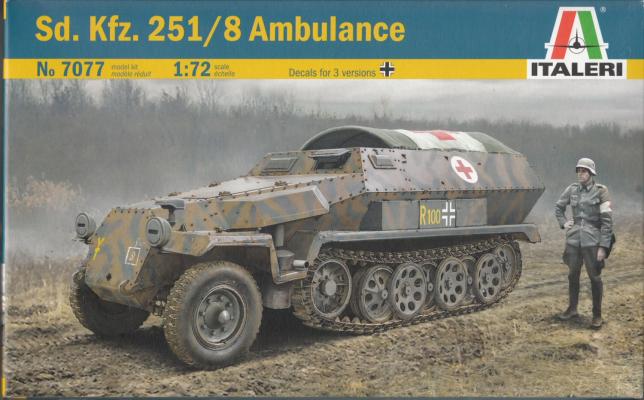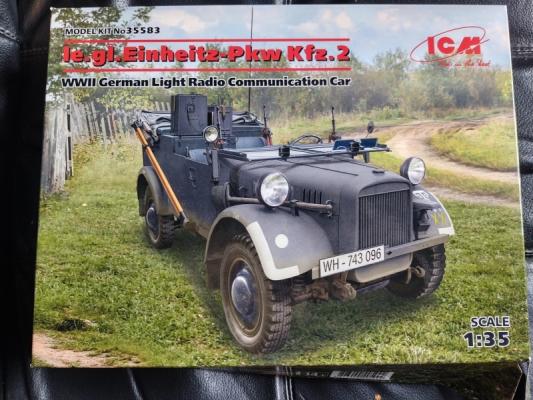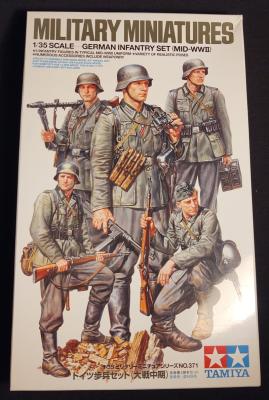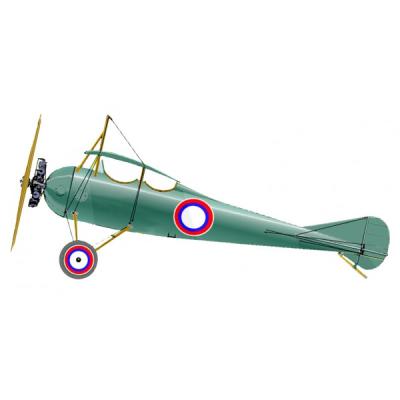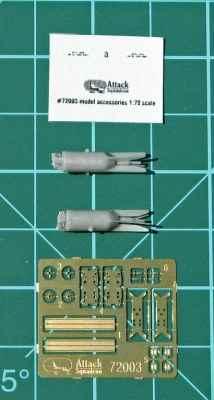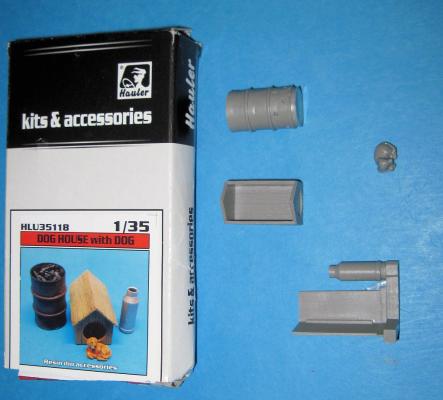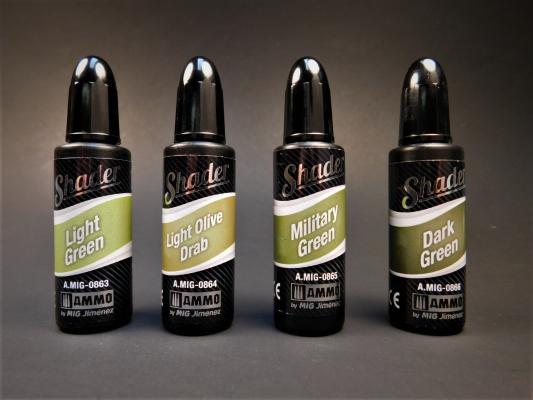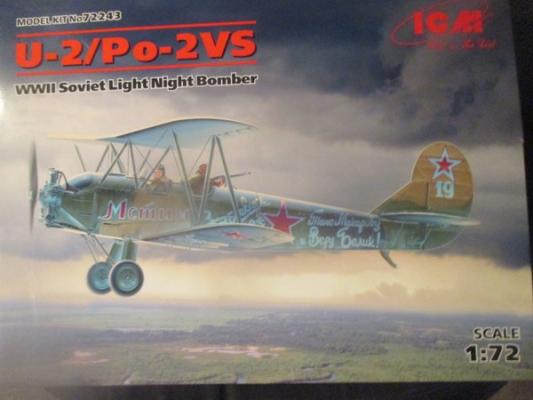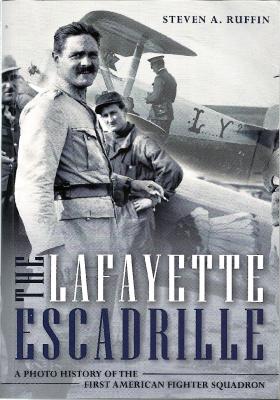Bottom Line Up Front: This most recent addition to the Osprey Men-at-Arms Series does its best to make sense of a confusing subject, to the Japanese civil wars of the 1860s and 1870s period. It is well illustrated and provides rudimentary information that is fairly easy to understand.
What's New
The Sd. Kfz. 251/8 was the ambulance version of the personnel carrier halftrack built by Hanomag. The vehicle was known in the Wehrmacht as the Krankenpanzerwagen, (armored ambulance). It could carry 8 “walking wounded” or 2 stretcher patients and 4 seated casualties.
The Kit
There are 4 sprues in the box, along with the decals and instructions. No clear parts. I pretty much followed the instructions as far as assembly, starting with the interior and then putting the top and bottom of the main compartment together. I did take a picture of the interior before I did the final assembly, because that’s the last time anyone’s going to see the driver’s compartment, since there are no windows or openings.
I painted the entire vehicle panzer dark gray, including the wheels and the suspension parts. I then painted it with panzer schokobraun in stripes for the camouflage. I then painted the black tires on the track suspension and assembled the suspension parts.
Brief History
Manufactured by the Stoewer Company, as well as BMW and Hanomag since 1936, the light uniform all-road car (leichten gelande Einhets Personen-Kraftwagen) possessed all-wheel drive, independent suspension, and a simplified open body. This particular body, the Kfz.2, was a three-seat communication car with a Torn. Fu.b1 radio set.
The Kit
The kit consists of 5 styrene sprues, one clear sprue, and a small sheet of decals that represent the four featured schemes in the kit. Construction begins with the chassis, and over the course of the first thirteen assembly steps, you’ve handled 45 parts. Everything goes together pretty smoothly however.
The next thirteen steps have you assembling the engine and inserting it onto the chassis. It builds into quite a nice little kit all itself. Following that, we move onto the floor of the car, adding the fuel tank, bracket, rear reflector, and fuel tank nozzle. This is then added to the chassis.
Tamiya has really stepped up it’s game in the figure department in the last few years. Starting with single figures and sets in the re-boxing of the Marder III M, Hummel, and 38 (t), the new designs have really made assembly and posing easier than ever. There are notches and tabs that help align the shoulders, legs, and torsos (molded in front and back halves) to avoid any gaps. There are also molded indentations on the back of the torso and in the pouches to attach the extra equipment to so they appear to avoid them looking as if they’re simply resting on the torso and belt. The included facial details are also much more expressive and individualized than in the past. In one figure, there is a separate boot and another has a hand separate from the arm which is a bit odd. The drawback to the parts being so specifically keyed to each other is that they really aren’t interchangeable.
When this first came up for review, I’ll admit I never heard of this plane or company which is intriguing. A little quick research and I found that this was one of the first Russian monoplanes and it had an interesting difference with many planes - no ailerons. The ends of the wing bias because of their tether tension control wiring. That was enough for me. Omega Models located in the Czech Republic makes limited run resin models of lesser known subject. This kit comes in cream colored resin in 23 pieces with decals, instructions and a length of wire.
My first action was to wash the parts with dish detergent to remove any mold release and let dry. Next, I separated the parts from casting blocks and sanded down the minimal seam lines. All this prep work is critical as finding paint not sticking or a seam line later is much harder to fix.
One of the under recognized armaments for after market has been the depth charge. It is fairly simple to find missiles, bombs and other under wing things all very well done and in most scales but not so much depth charges. Brengun has issued a set (which looks like a rerelease of the Attack Hobby set) of the Mk. 54 Depth Charge in 1/72nd scale.
Looking at the set, you get two gray resin blocks which contain the depth charge body and the nose pin for the front arming propeller. There is also a photoetch fret containing 18 pieces, a set of decals and the instructions for assembly, painting and decaling the set.
One thing I find very refreshing amongst the modeling community is some of the ideas that come out and this one caught my attention immediately- a dog and his (or her?) doghouse. The set is very simple and comes as five parts. The doghouse is cast as one piece and the roof is separate. The dog, a burn drum and a milk container also come. All are cast perfectly and the only preparation was washing the parts and removing the casting blocks.
Ammo has released a new line of 20 paint effects colors in 10 ml bottles. I am reviewing four of these colors: #0863 Light Green 0864 Light Olive Drab, 0865 Military Green and 0866 Dark Green. These are the four green tones that they offer, along with blues, greys and earth tones. Here is what Ammo’s website says about this new product:
“The AMMO SHADERS are a new type of product designed to create a variety of effects on all types of models in a simple and fast way. The transparent and ultra-fine paint allows all skill level of modelers to apply stunningly realistic effects that seemed impossible before.
History
The Polikarpov U-2, later PO-2, was designed as a light training biplane, and first appeared in 1928. It was a two seat, of mainly wooden construction, training aircraft similar in many respects to most late twenties biplanes, and had all of the characteristics required for a military trainer, including rugged construction, a low powered but reliable powerplant, and excellent flying characteristics. It so impressed Soviet authorities that it was produced in very large numbers, over 30,000 being completed by Russian and foreign factories and maintenance units between 1928 and 1953, and the last ones weren’t built in Poland until 1959. The PO-2 served mainly as a primary trainer at first, but eventually was pressed into service as a crop duster, military liaison aircraft, med and general supply aircraft, and later as a reconnaissance and light bombing type.
Being an aficionado of the history of the aircraft and persons involved in aviation during World War I, this book became a “must have” after reading some of the reviews describing the book. I must say that I was not disappointed in any way, and in fact found this “photo history of the Lafayette Escadrille” one of the most compelling “reads” I’ve experienced in many a year.
The story of The Lafayette Escadrille is laid out in photos, quotes from letters written by the pilots, and historical records of the time. The author spent a year travelling to universities and museums, as well as the actual geographic locations described in great detail in the documentation uncovered during the research phase for the book. The author captured images of some of the buildings frequented by the men of the Lafayette Escadrille and the comparison of historical images and the modern images taken by Ruffin are remarkable.


